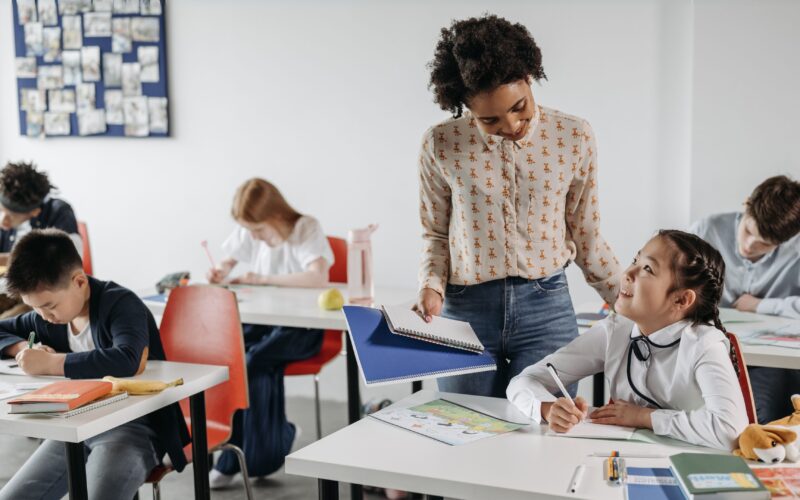What sparked your love of learning? For many of us, it wasn’t just a textbook or a test—it was a teacher who believed in us, a subject that came alive, or a challenge we learned to overcome. Our motivation to learn is deeply personal, shaped by a mix of emotional experiences, relationships, and support. In today’s classrooms, understanding the link between motivation, engagement, and Social Emotional Learning (SEL) is more important than ever.
Why Motivation and Engagement Matter
Motivation is the internal force that drives students to learn, grow, and achieve. Engagement is how that motivation shows up—through curiosity, participation, and focus in class. Together, they form the foundation of a meaningful education. When students feel emotionally safe, seen, and supported, they’re more likely to stay engaged and motivated.
Social Emotional Learning plays a central role here. SEL helps students understand and manage their emotions, build relationships, and make responsible decisions—all critical for sustaining long-term motivation and academic success.
The Emotional Side of Learning
Think back to a time when you felt encouraged by a teacher or proud of solving a tough problem. Now think of a time you felt frustrated or ignored. Emotions like these can shape how students approach learning every day.
Neuroscience tells us that emotions impact how we pay attention, remember things, and make decisions. Positive emotions—like joy, belonging, or pride—trigger the release of brain chemicals like dopamine, which help students stay focused and absorb information. On the other hand, stress and anxiety can make learning harder by shutting down the brain’s ability to process new ideas.
Teachers who foster emotionally supportive classrooms help reduce those stressors. That means using SEL strategies to build trust, offer encouragement, and create safe spaces for students to take risks and make mistakes.
Teachers as Role Models of Motivation
Motivated teachers inspire motivated students. A teacher’s passion for a subject, enthusiasm in the classroom, and care for their students are all powerful motivators. When teachers bring energy and joy to their lessons, students naturally respond with more interest and participation.
But the reverse is also true. When teachers are burned out or unsupported, that energy fades—and students can tell. That’s why it’s vital to support teacher well-being as a foundation for student success. Professional development, manageable workloads, and recognition all help teachers stay energized and engaged in their work.
As educator William Arthur Ward once said:
“The mediocre teacher tells. The good teacher explains. The superior teacher demonstrates. The great teacher inspires.”
Building Strong Relationships
“Kids don’t learn from people they don’t like.” That quote from educator Rita Pierson captures a simple truth: connection drives learning. Strong relationships between students and teachers form the heart of student motivation and SEL.
When students feel known and valued, they’re more likely to try, take ownership, and persevere. That trust builds over time, through everyday acts—greeting students by name, checking in on how they’re feeling, or giving honest, respectful feedback. These small moments add up to a big message: You matter here.
Peer relationships also play a huge role in motivation. When students work together, support each other, and feel part of a community, learning becomes a shared journey, not a solo effort.
Inclusive Classrooms = Motivated Learners
Classrooms that embrace inclusion—where all students feel welcomed and respected—help foster a sense of safety and belonging. Social Emotional Learning supports this by helping students develop empathy, collaboration, and conflict resolution skills.
District leaders and school administrators can support this work by providing SEL curriculum resources and professional development for staff. It’s not just about teaching SEL as a subject—it’s about embedding it into every part of the school day, from morning greetings to group projects to classroom rules.
Making Lessons Meaningful (and Fun!)
Let’s be honest: even the most important material won’t stick if it’s boring. To keep students motivated, lessons need to feel relevant, engaging, and even fun.
Using varied teaching methods—like hands-on projects, visual aids, storytelling, or group work—helps reach students with different learning styles. Howard Gardner’s theory of multiple intelligences reminds us that some kids are visual learners, while others learn best through movement, sound, or social interaction.
You can also boost engagement by incorporating real-life applications. Want to teach percentages? Try budgeting for a party. Want to teach storytelling? Have students create short videos or podcasts.
And don’t forget the power of gamification—adding elements of choice, challenge, and reward can help students stay engaged in even the most routine tasks.
Technology as a Tool for Personalized Motivation
Technology offers new ways to personalize learning and keep students motivated. Adaptive tools like Khan Academy or Quizizz allow students to learn at their own pace and get immediate feedback. Assistive technology can help students with different needs access materials more easily.
But technology is only powerful when used with purpose. It should enhance connection and engagement—not replace them. The best tools still depend on strong teacher guidance and meaningful content.
Feedback: Handle With Care
Feedback is one of the most powerful tools in education—but it’s also one of the most sensitive. Done right, it builds confidence and guides growth. Done poorly, it can crush motivation.
Students are more open to feedback when it comes from someone who cares and frames it with empathy. Use feedback as a connection point, not a correction point. Be specific. Recognize effort. Focus on what’s next, not just what went wrong.
Creating a feedback-rich culture where students feel safe to try, fail, and improve is central to both SEL and sustained motivation.
Giving Students Voice and Choice
One way to boost motivation is by giving students more ownership of their learning. When students have choices—what to research, how to show their understanding, or even which topics to explore—they feel more invested.
Offering voice and choice doesn’t mean lowering expectations. It means giving students meaningful opportunities to engage in their own learning process. That might look like project-based learning, flexible assignments, or student-led goal setting.
Clear Goals and Expectations
Finally, motivation thrives on clarity. When students understand what they’re working toward—and how to get there—they’re more likely to stay focused.
Set clear learning objectives. Share rubrics. Help students track their own progress. Most importantly, let students set personal goals that matter to them. When students are part of the process, they’re more likely to commit to the outcome.
Conclusion
Social Emotional Learning is more than a classroom strategy—it’s the emotional engine that drives motivation and engagement. By fostering strong relationships, supporting teachers, using feedback wisely, and personalizing learning, schools can create environments where students feel empowered to learn, grow, and thrive.
Motivation isn’t a one-size-fits-all solution. But with the right support, every student can discover their spark—and every educator can help them fan it into a flame.



